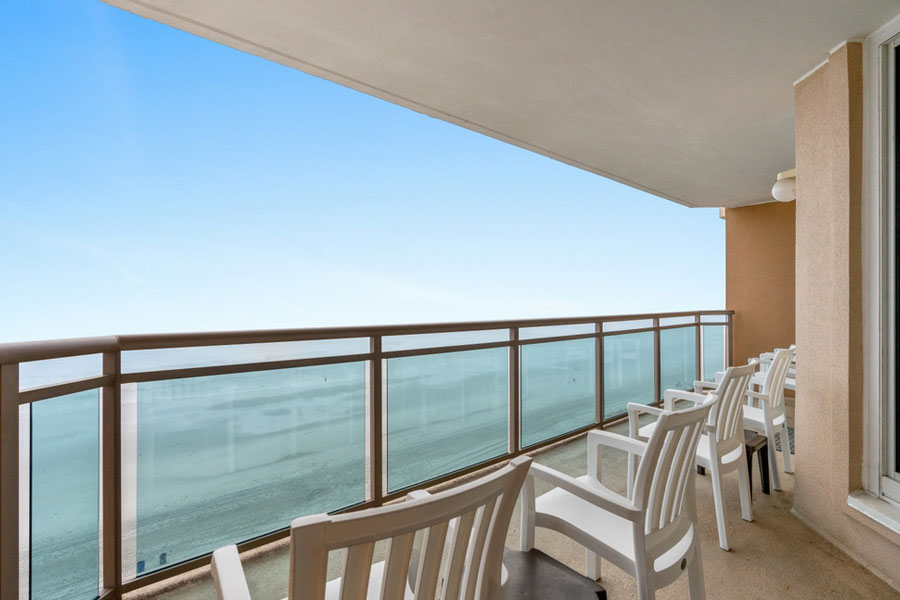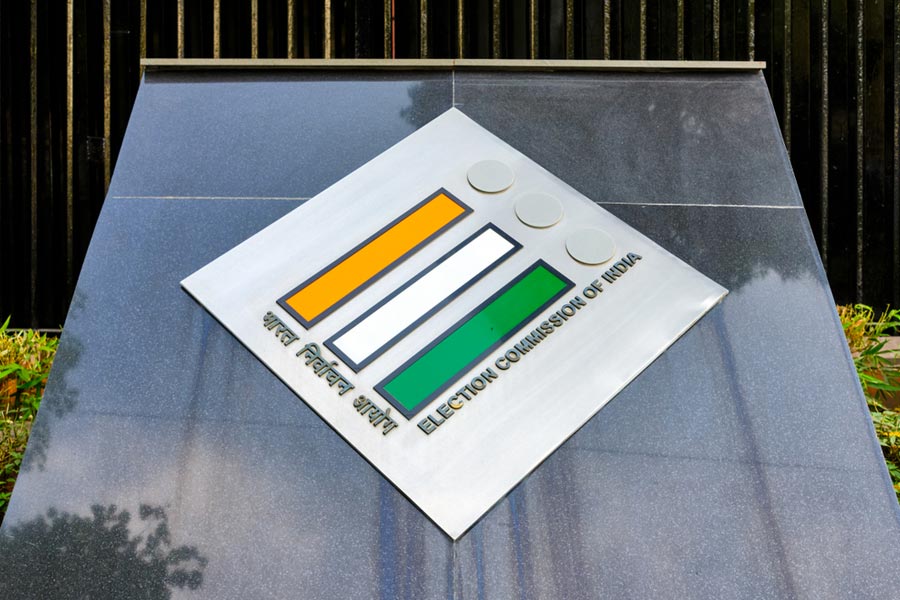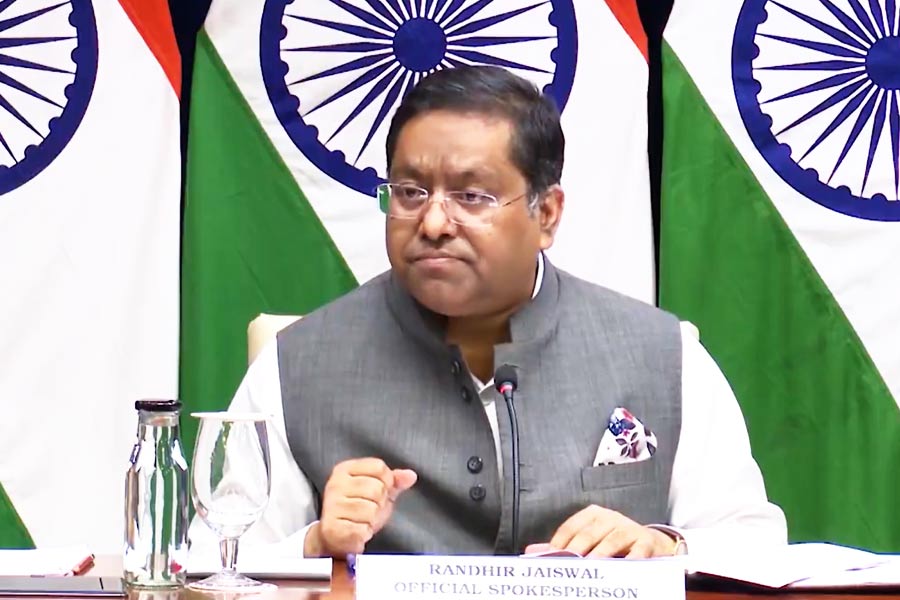 |
| A tourist riding an elephant. Picture by S.H. Patgiri |
Though the extension of the east-west corridor in N-E is welcome, its environmental hazards should be studied
The Northeast has long been handicapped because of the lack of top-class highways. The chicken?s neck in North Bengal that was formed after Independence and the bifurcation of the country in 1947 has remained a constraint in connecting the region with the rest of India. Therefore, road communication is vital for the region?s development.
The extension of the east-west corridor in the Northeast is a welcome move and will benefit this backward region tremendously. However, such development projects are often planned without looking at the broader angle and ends up creating conflicts. In most cases, the projects create conflicts with the environment. However, such controversies could have been avoided if the planners consulted experts beforehand. Development is needed, but certainly not at the cost of creating long-term environment hazards. The mega dams in Arunachal Pradesh are an example of projects that will have far reaching impact on the Brahmaputra valley?s ecology.
The super highways in the Northeast will have three segments: The east-west corridor upto Silchar; a connection to Nagaland through central Assam and the link from central Assam to the farthest corner of eastern Assam. Though planning and implementation have started in patches, the long-term impact on the environment has not yet been properly assessed. The segment-by-segment details are as follows:
The east-west corridor upto Silchar: This has been aligned along National Highway 31 in North Bengal through western Assam (via Rakhaldubi-Barama-Rangiya) to Guwahati from where it will follow National Highway 37 upto Nagaon. Thereafter, it will follow National Highway 36 upto Doboka and then along the Lumding-Maibong-Jatinga-Silchar highway. This highway will not have any significant environmental impact from the West Bengal border to Guwahati. In Kokrajhar, it will pass through the Kochugaon and Chirang Reserve Forests for a distance, which is deforested and encroached on and hence, there is no problem. Between Guwahati and Doboka, too, it is largely free from any environmental concern except for a small portion between Jorabat and Sonapur, where it passes by the side of the Amchang Wildlife Sanctuary and Moragdola Reserve Forest.
Here again, there is no elephant corridor. However, after Doboka, between Bhalukmari and Lumding for about 20 km, the highway will pass through an important elephant habitat and a four-lane expressway will have serious impact on their migration. This area is part of the Lumding Reserve Forest as well as the Dhansiri-Lungding Elephant Reserve under Project Elephant and has very good forest cover. The option is to keep it to two lanes instead of four, as the forested areas are also hilly.
After Lumding, the highway will pass through some good forestland in the Langting-Mupa Reserve Forest till Mupa, north of Maibong. One option is to take the route through Doboka-Diyungmukh-Dihangi-Haflong. This road is better than the earlier one and is used more frequently because it is connected to Umrangsu and Jowai/Shillong. This way, the highway will also avoid the Lumding Reserve Forest. Between Jatinga and Silchar, it will pass through the Barail range and for some distance, through the Barail Wildlife Sanctuary, which has some excellent forest cover. But here again, there is no elephant corridor and a two-lane highway, because it is mountainous, may not have much impact.
Outside Assam, however, this expressway will have severe impact in North Bengal. Since the entire area is plainland, a four-lane expressway will cut across the Mahananda Wildlife Sanctuary, Gorumara National Park-Chapramari Wildlife Sanctuary, Jaldapara Wildlife Sanctuary and the Buxa Tiger Reserve, which are important for elephants and gaur (Indian bison). Many animals are likely to be crushed to death by speeding vehicles. The highway will also fragment their habitat. In Jaldapara and near Gorumara, the Indian one-horned rhinoceros will also be affected. In view of the problem, a new alignment along another highway that passes through the southern part of these protected areas was taken up (that would have entered Assam through Boxirhat), but later abandoned. This is most unfortunate.
Nagaon-Nagaland link: This link starts from Doboka in Nagaon district and follows the existing alignment of National Highway 36 through Manja. The highway passes through the Doboka, Sildharampur, Patradisa and Longnit Reserve Forests, some unclassed forests and along the boundary of Daldali Reserve Forest. All these forests are known to be elephant habitats and have corridors at different places. The worst conflict with elephants will occur in the Doboka Reserve Forest, part of the Kaziranga-Karbi Anglong Elephant Reserve under Project Elephant. Hence, it should be constructed from Nilbagan through Howraghat. This will not incur any extra expenditure. Rather, the compensation for acquiring forestland will not have to be paid. In Karbi Anglong, the highway has two areas where there is regular elephant movement and no diversion seems to be in sight. One is near Silbheta in Patradisa and Longnit Reserve Forests, through which elephants move to the Marat Longri Wildlife Sanctuary, and the other is on the boundary of the Daldali Reserve Forest where the animals cross over to Lahorijan Reserve Forest. In view of the hilly terrain, two-lane road is likely to be the norm.
Nagaon-far eastern Assam extension: This extension will connect Jorhat-Sivasagar-Dibrugarh-Tinsukia-Lekhapani. Between Nagaon and Jakhalabandha and between Bokakhat and Margherita (over 90 per cent of the length), there is no environmental problem. However, for less than 10 per cent of its stretch, it has problem with the Kaziranga National Park, a world heritage site, as well as an outstanding bio-diversity hotspot. A four-lane expressway will virtually push this world famous site to death. A railway project along this route was shelved in the eighties when concern for Kaziranga was raised at the highest level. Since this ?problem stretch? is small, the expressway can always go ahead by making minor re-alignments. When the link to Nagaland was not mooted, I had prepared an alternative route through Doboka-Nilbagan-Manja and was planning to submit it to the concerned authorities. And now fortunately, this stretch has already been included in the plan. Hence, the Nagaon-Lekhapani extension may take off at Dillai in Karbi Anglong and pass through Sarihajan to Silonijan. From Silonijan, the expressway should not pass through three wildlife sanctuaries, Nambor, Garampani and Nambor-Doigrung, but through Borpathar and Jamuguri and maybe through some areas of Nambor North Block Reserve Forest near Jamuguri, as the area is entirely encroached on, and meet National Highway 37 at Numaligarh or Dergaon. This will save Kaziranga and provide a link to Sarupathar and Bokajan subdivisions.
The environment and forest minister of Assam has mooted the idea of flyovers near Kaziranga. However, for the movement of elephants, underground roads may be necessary, as elephants are unlikely to pass under flyovers. This is not impossible. If we can have hundreds of kilometres of metro rails in mega cities, why not a few kilometres of underground highway for the sake of an outstanding world heritage site?










